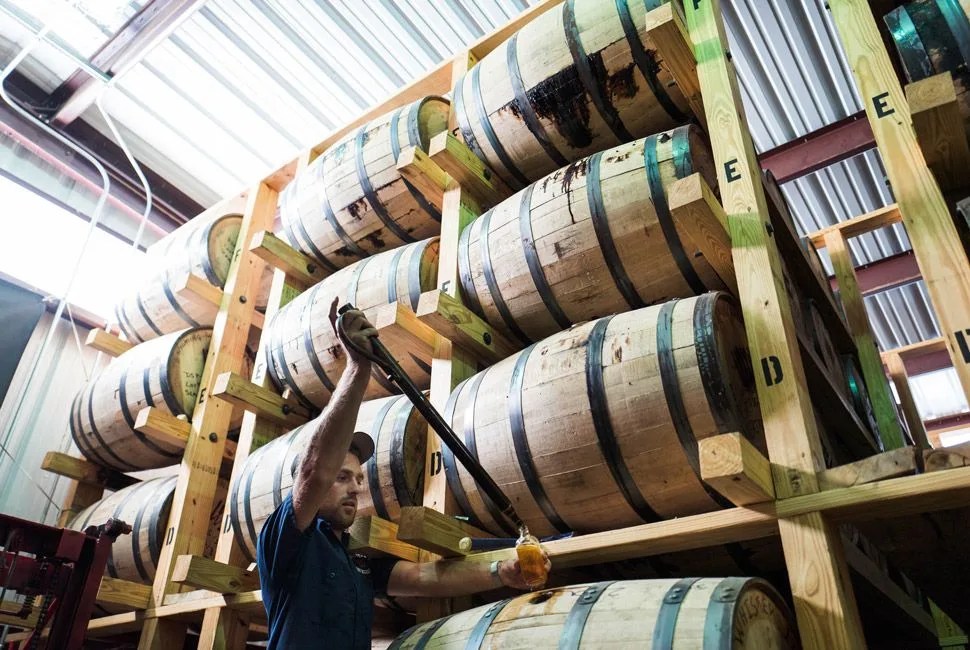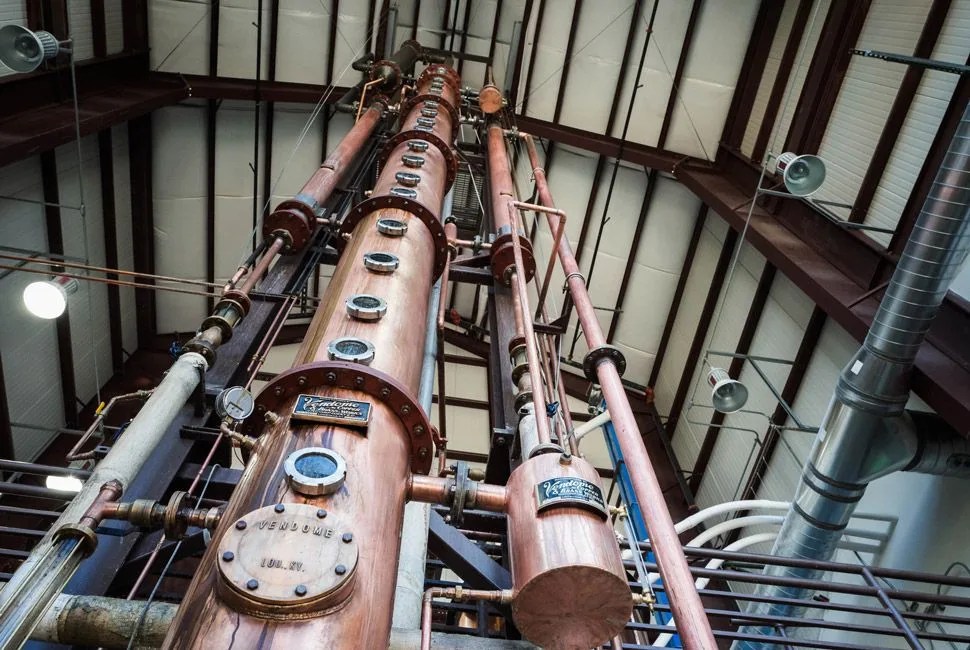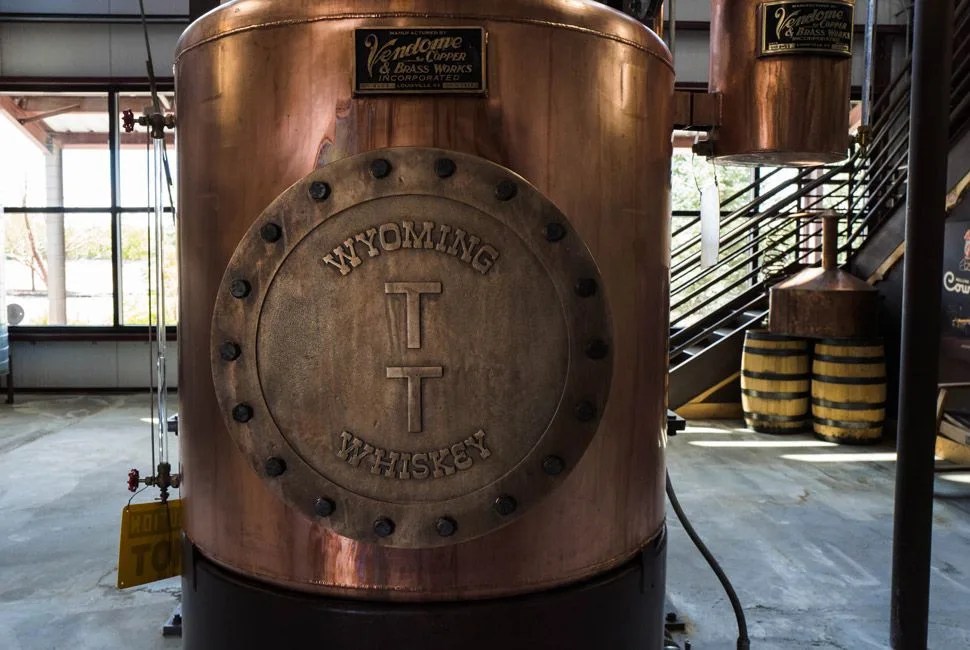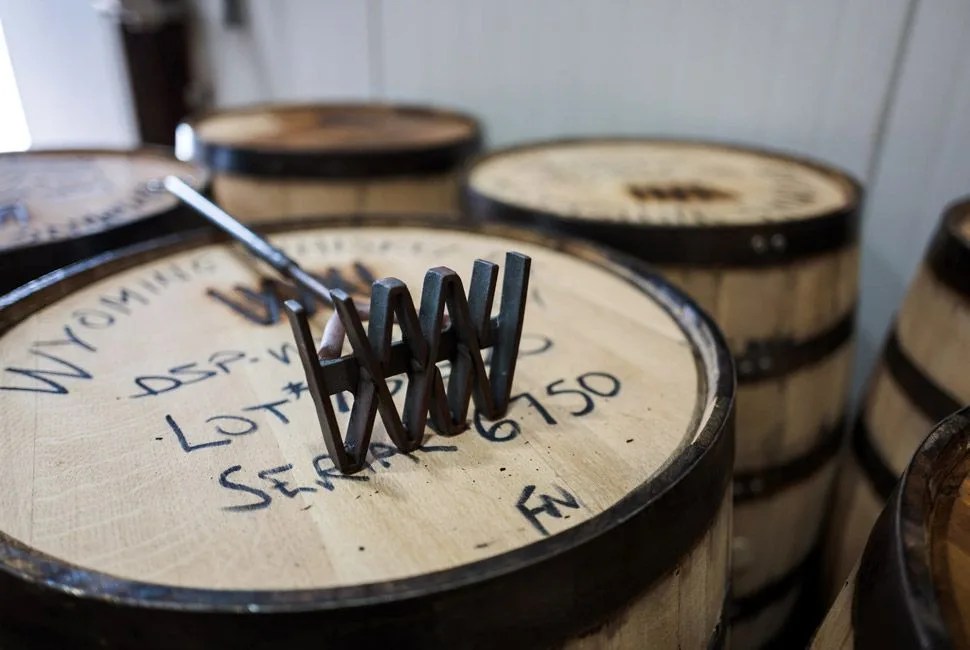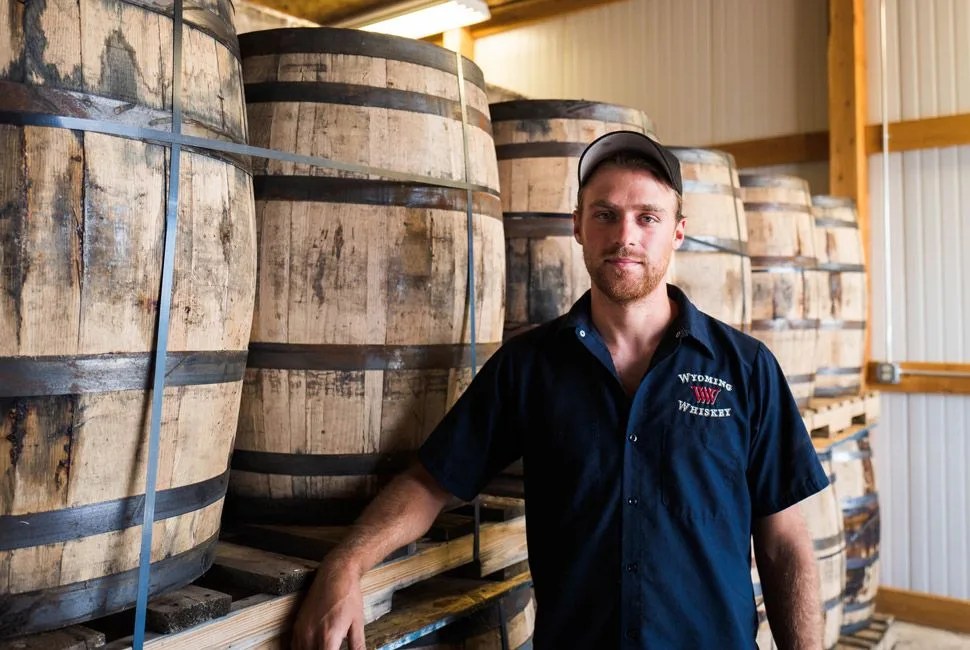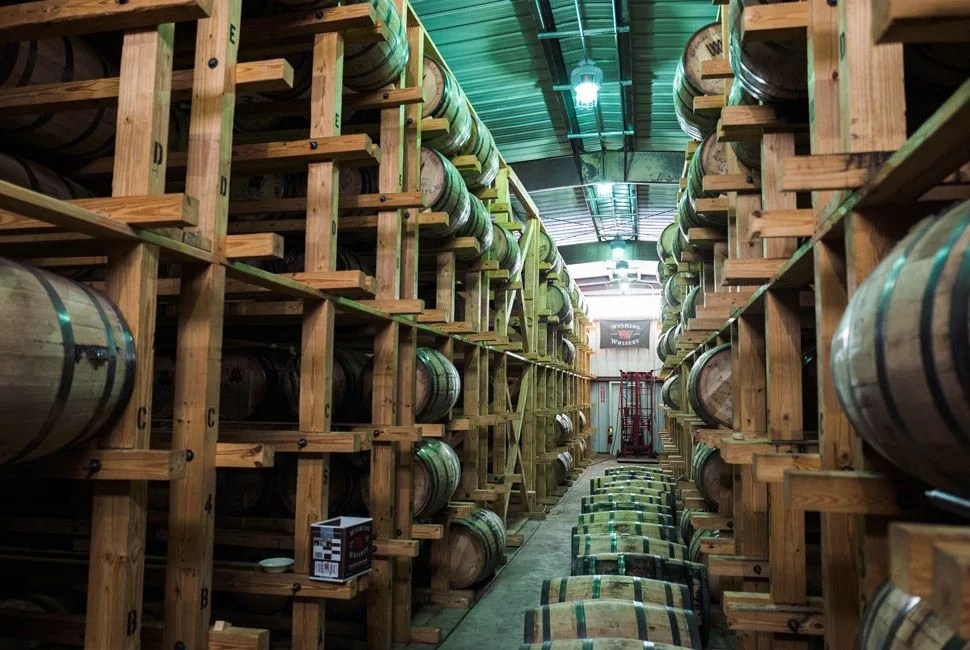6 photos
“Kirby’s actually a pretty cool town,” Sam Mead tells me as we stand at the dusty, literal end of town. Census reports 94 residents. That seems inflated. “There’s a ghost town across the highway,” he adds. Neighbors. The only thing in Kirby is Wyoming Whiskey which sits as a gleaming, white, five-story monolith at the end of this dirt road. Everything in town looks like it’s falling apart. Everything in Wyoming Whiskey is surgically clean, nearly new.
Wyoming Whiskey is a beguiling business, and it’s not just the contrast between location and distillery. It’s a company rife with contrasts, anchored by this: in a state that consumes whiskey only second to Coors, it’s almost universally disliked. Sam Mead, Distiller and son of the cofounder, Brad Mead, is aware. He thinks they launched too soon, after only three and a half years of aging. Now on Batch 29, five years aged, Mead thinks things are getting better. And while distribution is growing a lot (as of our visit, 25 pallets were shipped in the last two weeks, while the past two years, it was about a pallet a month), the general populace of Wyoming is still deliberating on the state’s eponymous company. Their decision may come down to two things — one, in a rodeo state, you see a hell of a lot more Crown Royal (a major PRCA sponsor) drank than bourbon; and two, the early Wyoming Whiskey wasn’t very good.
To sell bourbon, you need to make not-shitty bourbon. And the Meads are dead set on doing that, no matter the hurdles.
“Cows are so different,” Mead says, later in the day, as we stand in the kitchen of the WW visitor house. He has a bottle of Batch 28 out that he’s pouring into tasting glasses. His parents are lawyers in Jackson. The connection to cows isn’t obvious on the surface, but the Meads have always been a ranching family, and once you dig in a bit, the family tree turns up some surprises. Sam Mead’s dad is Bradford Scott “Brad” Mead, lawyer, rancher and cofounder, along with David DeFazio, of Wyoming Whiskey. Brad’s younger brother is Matt Mead, the current, 32nd Governor of Wyoming. Brad and Matt’s mother, Mary Mead, was a GOP nominee in 1990, but was unsuccessful in her campaign. Despite the political loss, she had plenty of personal success. She dedicated her life to ranching, mostly running the Mead Ranch, including an area known as “Lower Bar BC.” After she passed away, the family sold 1,200 acres of the land in 2004 — for nearly $100 million. Prior to the sale, the ranch was one of largest private land holdings in Teton County. Continuing back even further, Mary Mead’s father, Clifford Peter Hansen, was also the 26th Governor of Wyoming. The Meads are a Wyoming power family, and ranching is inherent in their blood. But beef ain’t bourbon.
“You could make the shittiest beef in the world,” Sam Mead says, “and it’s not like people are going to stop buying from you, because someone is going to buy it. Whereas, that’s not the case here.” We sip the bourbon. It’s sweet, strong on vanilla, light overall. It’s a pleasant sipping whiskey, if a still-maturing one. Mead is right about the dynamics between cows and bourbon. To sell bourbon, you need to make not-shitty bourbon. And the Meads are dead set on doing that, no matter the hurdles. It’s just that there have been plenty of hurdles.
Wyoming Whiskey came about after Brad Mead and David DeFazio went to the Kentucky Bourbon Festival. The two liked what they drank and wanted to bring it back to Wyoming. They bought the equipment to get started and began setting up shop on land they owned in Kirby, in the center of the state, on what used to be the grounds of a roping arena. “We were so naive,” Mead says. So they brought Bourbon Hall of Famer Steve Nally, from Maker’s Mark, out east. Nally created the WW recipe, using local grains (everything except some of the barley comes from Wyoming) and a mix of a distiller’s yeast and a white wine yeast. “He was shooting for a lot like Maker’s Mark,” Sam Mead says. When asked if he sees similarities, Mead gives a declarative “No,” then, almost in a whisper, adds, “I would drink ours over Maker’s Mark.”

